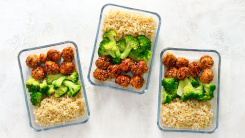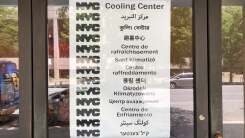Leftover Rice Won’t Kill You Like Social Media Says

Do you like to eat rice? Do you sometimes put it in the fridge to eat later? Me too! Those are very common, relatable things about us. Unfortunately, there’s been a mini-panic on social media lately about how dangerous it can be to eat days-old rice. The warnings are overblown, but there is a grain (ha!) of truth to them.
Yes, you can eat reheated rice safely
I’m going to start with the conclusion, and then we can get into why this is the case. The people saying to never save leftover rice, or those who imply that reheated rice can easily kill you, are either misinformed themselves or are exaggerating to the extreme.
You can safely eat reheated rice as long as it never sat in the danger zone for very long. The danger zone is 40 to 140 degrees Fahrenheit, i.e., warmer than a fridge but cooler than cooking temperatures. Two hours is considered a safe time limit, and honestly you should be following this rule with all of your cooked, perishable foods.
If your rice got from the rice cooker (or stovetop) to the fridge in that time, you’re not taking any wild risks. Your rice is then good for several days, just like your other leftovers. But if you’re in the habit of leaving rice on the counter for hours while you eat dinner, clean up, get distracted…oh, how long has that been out? Then, yeah, you should throw that rice away.
How rice can cause food poisoning
All food poisoning is caused by microorganisms, such as bacteria, or by toxins that they produce. While many different germs can grow on rice, the one that causes the most concern is Bacillus cereus (B. cereus for short). That’s “cereus” as in “cereal,” by the way—even though it lives in soil and can end up in pretty much any food, it’s most famous for hanging out in grains such as rice.
Like any bacteria, B. cereus can exist as bacterial cells, living off the nutrients and moisture in your food. So far, nothing special. But B. cereus is one of a few foodborne bacteria that make spores—you can think of them as being sort of like eggs containing the next generation. The spores are heat-resistant, so if you kill off the adults by cooking the food, the spores are still there. In fact, the cooling process after cooking triggers them to germinate, so they’ll begin growing right away.
And while the B. cereus bacteria are growing, they can produce what’s called an emetic toxin: a poison that makes you barf. This toxin is what causes the so-called “fried rice syndrome” or “reheated rice syndrome” that people are attributing to leftover rice.
To recap, the main thing that makes B. cereus different from most other food poisoning bacteria is that heat does not destroy the barf-inducing toxin. Normally, if you reheat leftovers to 165 degrees (or “until steaming” or “until piping hot”), you’re good. B. cereus laughs in the face of a good microwaving. The way to keep B. cereus from making you sick is to prevent it from growing, not to let it grow, and then remember to kill it.
But can’t B. cereus kill you?
Food poisoning from B. cereus on leftover rice can make you barf, but it’s extremely unlikely to do anything more serious. A typical case of emetic B. cereus lasts less than 24 hours, and involves nausea, vomiting, and stomach cramps. It’s not fun, and I don’t recommend getting it. But the dire warnings about how leftover rice puts people in the hospital are overblown.
There are two forms of food poisoning you can get from B. cereus: the kind from rice and starchy foods, which we’re talking about here, and a diarrheal form that is more often contracted from meat, vegetables, and dairy products.
Taking both of these together, the CDC estimates that between 2000-2008, there were an average 63,000 cases of B. cereus food poisoning each year, with 20 hospitalizations and 0 deaths. So, one-third of 1% of cases needed care in the hospital, and nobody died. That doesn’t mean deaths from this are impossible, just that the dire warnings from TikTok are missing a hell of a lot of perspective.
B. cereus can cause serious illness and death, but not in the foodborne form. The NIH has a publication for doctors here, describing the different types of B. cereus infection, along with their complications and risk factors. The bad cases are associated with bacteria acquired through traumatic injuries, intravenous drug use, and medical devices like central lines and pacemakers. (Remember, this is a common soil bacterium, so people are getting this form of the disease through infected wounds.) There are B. cereus infections that are associated with the eyes, or that begin in the eyes before spreading to the rest of the body, and these tend to follow eye injuries. Medically significant: yes. Waiting for you in bowls of refrigerated rice: no.
The exact steps you should take to store and reheat rice safely
We mentioned before that rice is safe to reheat (or to eat cold), as long as it was properly handled in the first place. Let’s go over the details.
And, by the way: As much as I love being your go-to source for understanding the science behind the rumors you might hear online, please remember that the USDA has a ton of food safety resources online, as do the cooperative extensions of many universities. These are much better sources than TikTok, blogs, or even major media outlets. Food safety professionals know this stuff because it’s their job.
So let’s look at this publication from the USDA and the University of Florida’s Institute of Food and Agricultural Sciences on preventing foodborne illness from Bacillus cereus. Does it say to throw out your rice? No! It says:
Heating (i.e., cooking) to ≥ 145ºF (63ºC) and reheating to 165ºF (74ºC) for 15 seconds will destroy the vegetative (actively growing) cells.
Once cooked, the rapid cooling of the product will prevent any spores present from germinating. However, note that foods cannot be made safe to eat if toxins have already been formed.
Keep hot foods above 135ºF (57ºC) and cold foods below 41ºF (5ºC) to prevent the formation of spores. • Refrigerate leftovers properly by cooling rapidly to 41ºF (5ºC) or below. Make sure leftover containers are not stacked close together; this will allow for adequate airflow around the food and ensure rapid cooling.
They don’t give a specific length of time that counts as “rapid” cooling, but elsewhere they quote regulations that say food shouldn’t sit out for more than two hours.
A rice cooker on the “warm” setting is usually about 150 degrees Fahrenheit, which means that, gross as it may seem, it’s probably, usually, fine to eat rice that has been in there for hours. But if you do this often, you may want to use a thermometer to be sure that your rice cooker is actually keeping the rice hot enough to stay out of the danger zone.
And how long can you store the rice in the fridge, if you handled it properly in the beginning? There’s no specific recommendation here for rice, but for cooked food in general, the limit is 7 days if it’s been under 41 degrees the whole time. (Your fridge should be well below 41, both to keep food safe and because food lasts longer the colder it is. Since 32 is freezing, anywhere in the mid thirties would be perfect.) That seven-day guideline is for places like restaurants; the recommendation for the general public is three to four days is three to four days.
For reasons I don’t quite understand, sources from the United Kingdom (like this from the NHS) tend to recommend storing rice for no more than one day in the refrigerator. But U.S. sources agree with the University of Florida. Here’s a University of Wisconsin-Madison food safety specialist saying you can keep well-handled leftover rice for three to five days (and noting that a cold rice salad is one of her favorite lunches). The University of California agrees in their own rice safety publication, recommending three to five days as well. I’ll stick to their advice instead of the TikToks’, and keep eating my leftover rice.



